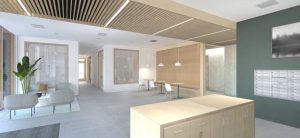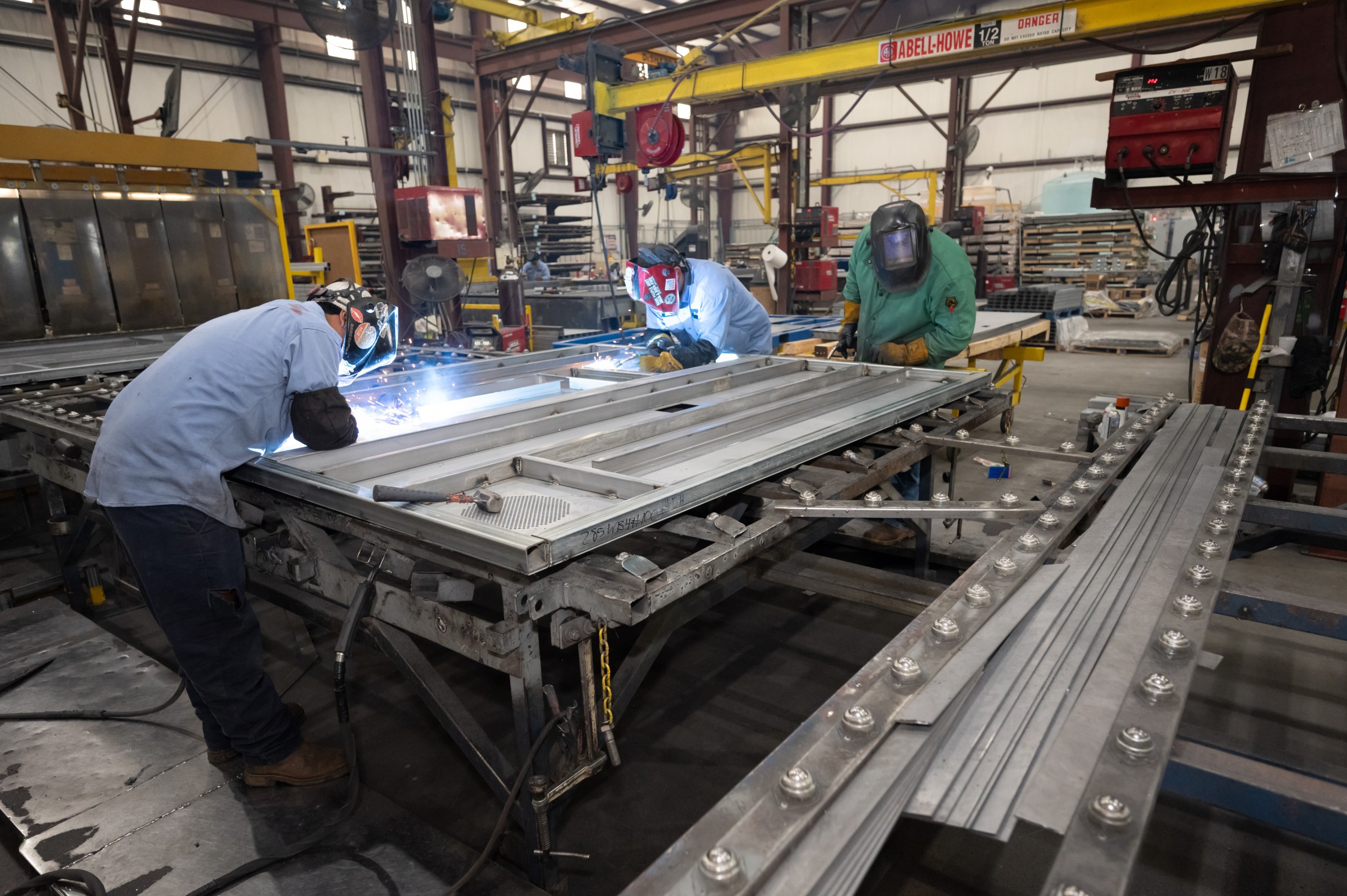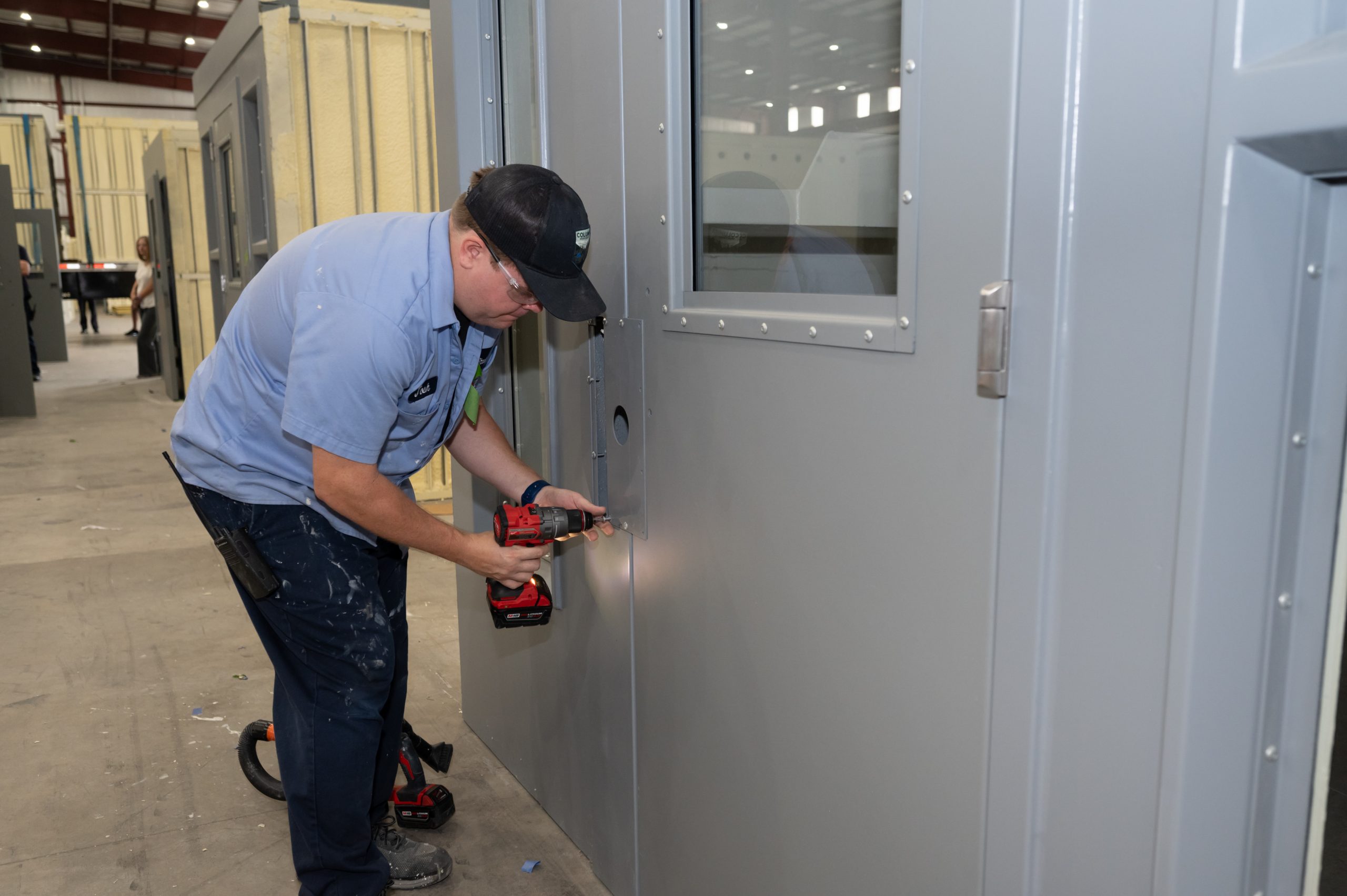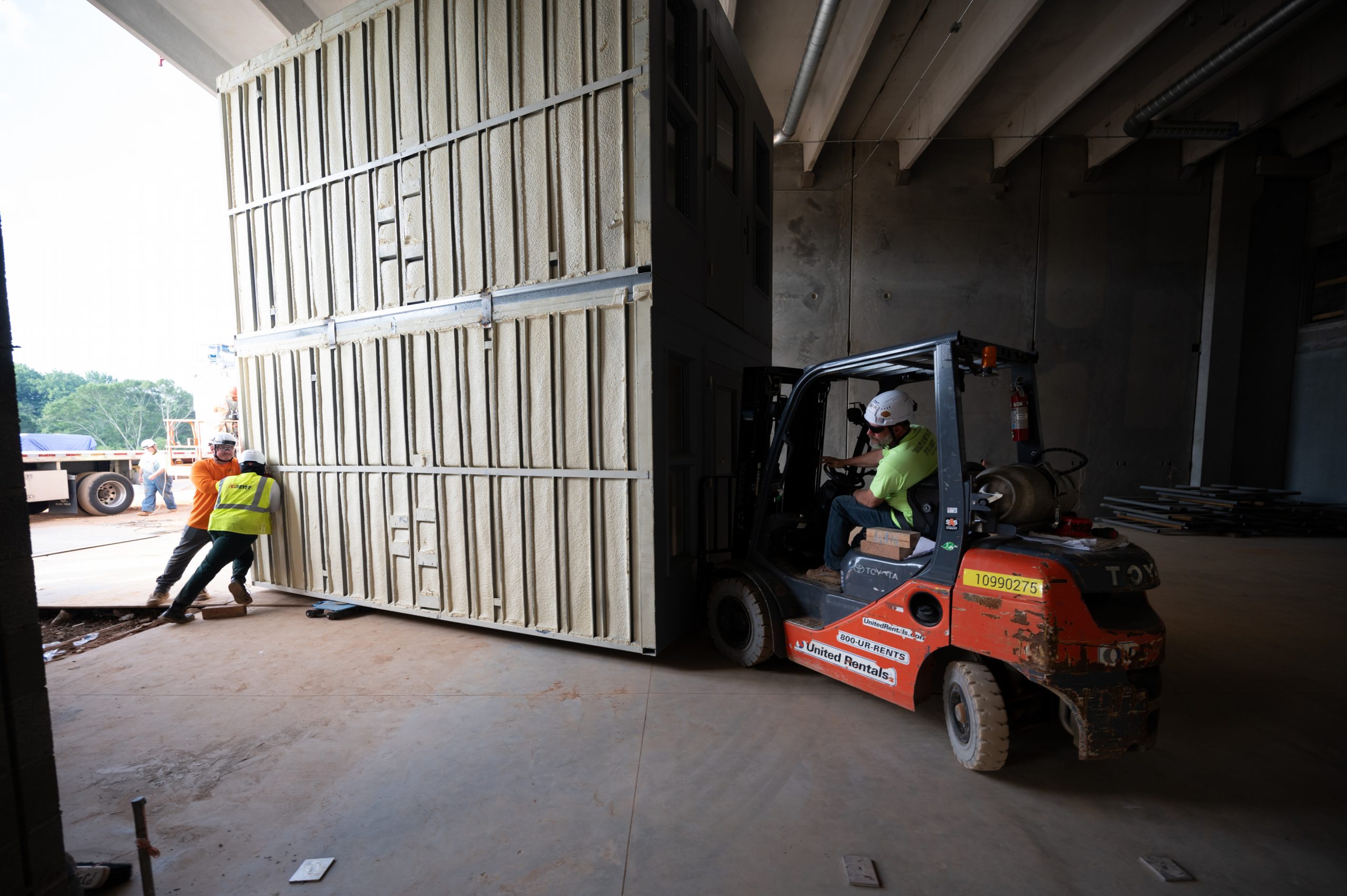Modular Construction for Healthcare: Accelerating Facility Development
Modular construction is changing the way healthcare facilities are built. This method uses pre-made building parts that are put together on-site. It’s faster and cheaper than regular building methods. Modular construction for healthcare allows for quick assembly of hospitals and clinics, which is very helpful during health crises.
This building method has been used to make emergency healthcare facilities in many places. It lets builders make clean, safe spaces for patients and staff in a short time. The parts are made in factories, so the quality is high and consistent.
Modular construction also helps cut down on waste and noise at building sites. This is good for the environment and for people who live near where new hospitals are being built. As technology gets better, modular building for healthcare is likely to become even more common.
Key Takeaways
- Modular construction speeds up the building of healthcare facilities
- Factory-made parts ensure high quality and consistency in healthcare buildings
- This method reduces waste and noise, making it better for the environment
Concept of Modular Construction
Modular construction is a building method that uses pre-fabricated sections to create structures. It offers speed, efficiency, and quality control advantages over traditional construction techniques.
Definition and Overview
Modular construction involves making standardized building units in a factory setting. These units, called modules, are then transported to the construction site. Workers assemble the modules to form a complete building.
This method differs from traditional on-site construction. It allows for faster build times and less waste. Modules can include floors, walls, ceilings, and even plumbing or electrical systems.
Modular healthcare buildings are becoming more common. They offer flexible solutions for medical facilities.
Historical Development
The concept of modular construction dates back to ancient times. Romans used prefabricated parts to build forts quickly.
Modern modular construction began in the early 20th century. The Sears Catalog Homes, sold between 1908 and 1940, were early examples. These kit homes came with pre-cut lumber and instructions.
After World War II, modular construction gained popularity. It helped meet the high demand for housing. Over time, the technology improved. Today, modular methods are used for various building types, including hospitals and clinics.
Types of Modular Construction
There are several types of modular construction:
- Permanent Modular Construction (PMC): Used for long-term structures like schools or offices.
- Relocatable Buildings: Temporary structures that can be moved to different sites.
- Panelized Systems: Flat panels are assembled on-site to create walls, floors, and roofs.
- Prefabricated Prefinished Volumetric Construction (PPVC): Fully-finished modules, including interior finishes.
Each type has its benefits. PMC is suitable for healthcare facilities that need durable, long-lasting structures. Relocatable buildings work well for temporary clinics or disaster response.
Panelized systems offer flexibility in design. PPVC reduces on-site work, speeding up construction time.
Advantages of Modular Construction in Healthcare
Modular construction offers several key benefits for healthcare facilities. It speeds up building, ensures consistent quality, and promotes sustainability.
Reduced Construction Time
Modular construction can cut project timelines by up to 50% compared to traditional methods. This is because module manufacturing happens off-site while site prep occurs simultaneously.
Faster completion means hospitals can start serving patients sooner. It also reduces disruptions to existing healthcare services during expansions or renovations.
In emergencies like pandemics, modular units allow for rapid deployment of extra hospital capacity.
Quality Control and Consistency
Factory-built modules undergo strict quality checks in controlled environments. This results in fewer defects and more consistent quality compared to on-site construction.
Prefabrication and modular manufacturing allow for precise assembly of complex medical equipment and systems. This accuracy is crucial for healthcare facilities that rely on advanced technology.
Modular construction also reduces weather-related delays and damage, further ensuring quality.

Sustainability and Environmental Benefits
Modular construction is more eco-friendly than traditional methods. It produces less waste and uses resources more efficiently.
Factory production allows for better recycling and reuse of materials. It also reduces on-site pollution and disturbance to surrounding areas.
Modular buildings are often more energy-efficient, leading to lower operating costs for healthcare facilities. They can be easily upgraded with new energy-saving technologies.
The ability to relocate or repurpose modular units extends their lifespan, further reducing environmental impact.
Implementation in Healthcare
Modular construction offers unique benefits for healthcare facilities. It allows for quick deployment and adaptable spaces to meet changing medical needs.
Design Considerations
Modular healthcare buildings need careful planning. Designers must account for medical equipment, patient flow, and staff workflows. Rooms should be flexible to accommodate different uses.
Modular structures can include features like:
- Isolation areas for infectious patients
- Specialized ventilation systems
- Easy-to-clean surfaces
Layouts should promote efficiency and infection control. Designers can create standardized room layouts that are replicated across modules.
Regulatory and Compliance Aspects
Healthcare facilities must meet strict regulations. Modular construction needs to comply with:
- Building codes
- Health and safety standards
- Medical equipment requirements
Regulatory compliance is crucial for patient safety and facility accreditation. Manufacturers work closely with healthcare providers to ensure all standards are met.
Modular units undergo rigorous testing before deployment. This helps speed up the approval process for new facilities.
Integration with Existing Facilities
Modular units can expand existing hospitals. They need to blend seamlessly with current structures.
Key integration points include:
- Connecting utility systems
- Aligning with existing corridors
- Matching exterior design elements
Smart technologies help link new modules to hospital networks. This ensures smooth information flow and patient care.
Careful planning minimizes disruption to ongoing operations. Modules can be added with little impact on existing services.
Project Management
Project management is crucial for successful modular construction in healthcare. It involves careful planning, budgeting, and risk assessment to ensure efficient delivery of medical facilities.
Planning and Scheduling
Modular construction demands precise planning and scheduling. Project managers must coordinate factory production with on-site work. They create detailed timelines for each phase, from design to assembly.
Key tasks include:
- Designing modular units
- Organizing factory production
- Arranging transportation
- Preparing the construction site
- Scheduling module installation
Managers use specialized software to track progress and adjust schedules as needed. They must anticipate potential delays and have contingency plans ready.
Clear communication between all team members is essential. Regular meetings help keep everyone aligned on project goals and timelines.
Budget and Cost Efficiency
Modular construction can offer significant cost savings for healthcare projects. Project managers must carefully plan and monitor expenses to maximize these benefits.
Healthcare facilities built using modular methods often see reduced costs due to:
- Shorter construction timelines
- Less on-site labor
- Reduced material waste
- Lower financing costs
Managers create detailed budgets covering all aspects of the project. They track expenses in real-time and make adjustments to stay within budget limits.
Bulk purchasing of materials for multiple units can lead to savings. Managers negotiate with suppliers to secure the best prices.
Risk Management
Modular construction presents unique risks that project managers must address. They develop comprehensive risk management plans to identify and mitigate potential issues.
Common risks include:
- Transportation damage to modules
- Weather delays during on-site assembly
- Quality control issues in factory production
- Regulatory compliance challenges
Managers conduct regular risk assessments throughout the project. They develop contingency plans for each identified risk.
Insurance plays a key role in protecting against unforeseen events. Managers secure appropriate coverage for all stages of the project.
Quality control measures are implemented in both factory and on-site settings. This helps ensure that healthcare facilities meet all required standards and regulations.
Technological Innovations
New technologies are changing how modular healthcare facilities are built. These advances make construction faster, more flexible, and better quality.
Advancements in Manufacturing
Robotic systems now help build modular units in factories. These robots can do repetitive tasks like welding and cutting with high precision. This speeds up production and improves quality control.
3D printing is another game-changer. It allows complex parts to be made quickly and cheaply. Some companies are even experimenting with 3D printing entire modular units.
Advanced materials are also being used. Things like self-healing concrete and antimicrobial surfaces are ideal for healthcare settings. These materials can make buildings last longer and be more hygienic.
Customization and Flexibility
Modular construction now offers more ways to customize buildings. Computer-aided design lets architects create unique layouts easily. This means each healthcare facility can be tailored to its specific needs.
Movable walls and plug-and-play utility systems add flexibility. Rooms can be quickly resized or repurposed as needs change. This is crucial for hospitals that need to adapt to new situations fast.
Smart building tech is being built into modules too. Things like automated lighting and climate control make buildings more efficient. They also improve comfort for patients and staff.
Building Information Modeling (BIM)
BIM software is revolutionizing how modular buildings are designed and built. It creates detailed 3D models of every part of a building. This helps catch design flaws early and saves time and money.
BIM also improves coordination between different teams. Everyone from architects to installers can work from the same model. This reduces mistakes and speeds up the whole process.
The software can simulate how a building will perform over time. This helps designers make choices that will save energy and reduce maintenance costs in the long run.
Case Studies
Modular construction has proven effective for rapidly deploying healthcare facilities. Real-world projects highlight both successes and areas for improvement in this approach.
Successful Modular Healthcare Projects
The Wuhan Thunder God Mountain Hospital in China stands out as a prime example of modular construction in healthcare. Built in just 10 days during the COVID-19 outbreak, it showcased the speed and efficiency of prefabricated modules.
In Hong Kong, multiple modular healthcare facilities were quickly erected to address the pandemic. These projects demonstrated the versatility of modular construction in dense urban areas.
The use of modular structures for field hospitals has also proven successful. These temporary facilities can be rapidly deployed and easily adapted to various healthcare needs.
Lessons Learned
One key lesson is the importance of planning and design in modular healthcare projects. Careful consideration of placement and layout is crucial for optimal functionality.
Integration of building information modeling (BIM) has emerged as a valuable tool in modular healthcare construction. It enhances coordination and reduces errors during the prefabrication and assembly processes.
Challenges remain in adapting modular designs to specific healthcare requirements. Future projects should focus on improving flexibility and customization options to better meet diverse medical needs.
Challenges and Considerations
Modular construction for healthcare facilities faces unique hurdles. These range from transportation issues to long-term upkeep concerns. Each challenge requires careful planning and innovative solutions.
Transportation and Logistics
Moving large modular units presents significant challenges. Size limits on roads can restrict module dimensions. This affects design flexibility and may increase the number of modules needed.
Weather conditions can delay transport. High winds or heavy rain pose risks during movement. Careful scheduling is crucial to avoid these issues.
Specialized equipment is often required. Cranes and trucks must be able to handle the weight and size of modules. This can increase costs and complexity.
Route planning is critical. Bridges, tunnels, and narrow roads may not accommodate large modules. Detailed surveys of the entire route are necessary before transport begins.
Site Preparation and Assembly
Preparing the site for modular healthcare facilities demands precision. The foundation must be perfectly level to ensure proper module alignment.
Utility connections need careful planning. Plumbing, electrical, and HVAC systems must line up exactly between modules. Even small misalignments can cause big problems.
Weather protection is crucial during assembly. Modules must be sealed quickly to prevent water damage. This can be challenging in areas with unpredictable weather.
Crane access is a key consideration. The site needs enough space for large cranes to operate safely. This can be difficult in crowded urban areas or existing hospital campuses.
Long-Term Maintenance
Modular healthcare buildings require specific maintenance approaches. Joint seals between modules need regular inspection and repair. This prevents air and moisture infiltration.
HVAC systems in modular structures may need more frequent servicing. The compact design can make access challenging for technicians.
Structural integrity checks are important. Modular buildings may settle differently than traditional structures. Regular monitoring helps catch issues early.
Updating or replacing modules can be complex. It often requires careful planning to minimize disruption to healthcare services. Sometimes, entire sections may need to be removed and replaced.
Pest control is another concern. The many joints and seams in modular buildings can provide entry points for pests. Regular inspections and treatments are necessary to maintain a sterile healthcare environment.
Future Outlook
Modular construction is set to transform healthcare facilities. New technologies and global needs are driving innovation in this field.
Trends in Healthcare and Construction
Modular and adaptable design approaches are shaping future-proof healthcare facilities. These methods allow for flexible spaces that can change with evolving medical needs.
3D printing and robotics are entering the modular construction scene. These technologies may speed up building processes and cut costs.
Data-driven design is growing. It helps create spaces that work better for patients and staff. This approach uses information from existing facilities to improve new ones.
Potential for Global Expansion
Modular construction has room to grow worldwide. It can help build hospitals fast in areas hit by disasters or facing health crises.
Multi-story modular buildings are becoming more common. This opens up options for larger healthcare facilities in urban areas with limited space.
Some challenges remain:
- Updating building codes
- Training workers in new methods
- Improving public perception
As these issues are tackled, modular construction could become a go-to choice for healthcare projects globally.
Conclusion
Modular construction offers many benefits for healthcare facilities. It allows for faster building times and less disruption. This can be crucial during health emergencies.
The approach provides flexibility to expand or modify spaces as needs change. Healthcare facilities can adapt quickly to new demands.
Quality control is often better with modular construction. Parts are made in controlled factory settings. This leads to more consistent results.
Cost savings are possible through efficient production and reduced on-site work. However, initial costs may be higher in some cases.
Modular healthcare facilities can help address space shortages in urban areas. They allow for more isolation units in dense populations.
The industry continues to innovate. New materials and technologies are improving modular options for healthcare.
Challenges remain in areas like transportation and site integration. But ongoing research and development are addressing these issues.
As healthcare needs evolve, modular construction will likely play an increasing role. Its ability to provide quick, adaptable solutions makes it a valuable tool for the future.



